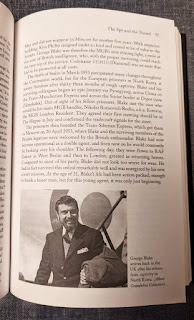Sci-Fi Skirmish Scenarios by John Lambshead is an excellent selection of wargames scenarios that offer a great supplement for any rules set and, despite the Sci-Fi title, they could be used with any skirmish rules, certainly from say Steampunk through Modern and on into any variety of Sci-Fi.
The book starts off by laying out a few different terrain types from city centres through sub-urban settings via industrial and finally ending up in wastelands. So covering most terrain types that would suite the setting.
Most of the book is made up of page after page of different scenario ideas. Each scenario taking up between two and six pages to flesh out. Now reading the book straight through does get a little dry and repetitive, however, that is not really how this book is designed to be used ( although it is a handy way to find some of the more interesting scenarios). The book is best used by simply dipping in and picking random scenarios when you are stuck for ideas for your evenings game.
After the scenarios, the book looks at ways to use run a campaign and then also how to use it for solo play.
All this is extremely useful for the modern slim, miniature agnostic rulebooks that are out there and it gives a vast resource of scenario ideas that can easily be adapted to any game. I will probably even end up adapting scenario ideas from the book for my historical or fantasy skirmish games. I can see this book being reached for every time I am planning a game in future.
An excellent addition to any wargamers collection.
Get the book HERE!












